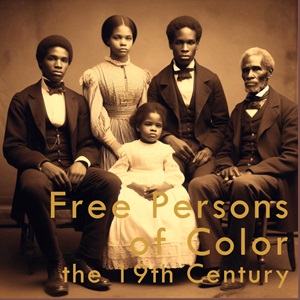

 |
 |
|
Study Areas Free Persons of Color |
Harrisburg CemeteryBlack History Perspectives Tour |
Tour stop 2: Thomas Elder: Banker, Lawyer, SlaveholderThomas Elder (1767-1853)As the son of John Elder, the "Fighting Parson" of Paxton Church, it should not be a surprise that Thomas Elder first made a name for himself in the military. His involvement with local militia led to participation in the Whiskey Rebellion, after which he was appointed to the rank of Lieutenant Colonel. He commanded the 66th regiment of Pennsylvania Militia from about 1799 to 1804. Though his militia experiences were confined to his early years, people in Harrisburg would refer to him as "Colonel" for many years. Even before his short-lived military career, Thomas Elder was busy establishing himself as a lawyer. He was educated in Philadelphia and upon his return to Harrisburg, studied law with John Hanna, being admitted to the Dauphin County Bar in 1791. His legal career would span more than forty years, during which time many young men would in turn come to Harrisburg to study law under him. He developed an intense interest in public improvements as he watched Harrisburg grow from a frontier trading post to a bustling town. He played an important role in the creation of both the Harrisburg Bank and the Harrisburg Bridge Company, and served long terms as president of each institution, being president of the Harrisburg Bridge Company from its creation until 1846, and serving as president of the Harrisburg Bank from 1816 until his death in 1853. As Harrisburg's leading banker for almost forty years, Thomas Elder was the man responsible for developing most of the town's economic infrastructure. He had maintained a correspondence with Joseph Heister for over two decades prior to Heister's election as Governor of Pennsylvania. That relationship led to Heister's appointment of Elder as state attorney general in 1820, a post he held until 1823. The biographical details above constitute most of what is said about Thomas Elder during tours of the Harrisburg Cemetery. Seldom is the subject of Thomas Elder's slaveholding brought up. The practice of owning people was not uncommon in Pennsylvania during the early decades of his lifetime, and quite a few of the Scots-Irish families that worshipped with his father at Paxton Presbyterian Church held slaves. Thomas was thirteen years old when Pennsylvania passed its Act for the Gradual Abolition of Slavery in 1780. That act, together with a supplemental act in 1788, required that all slaves, and children of slaves, be registered with the county clerk. From those surviving registries we know that Thomas Elder registered two slaves, Lydia and Henry, both children born after March 1, 1780, who would by law be manumitted upon their 28th birthday. Other members of the Elder family owned slaves. His brother Robert, a farmer in Swatara Township, placed a young Negro boy up for sale in 1808, advertising: he is stout, healthy, and active, and understands all labour on a farm, as well as any of the colour. He is likewise a good waggoner, and careful of horses, knowing very well how to feed, & to take care of them --Any person wanting such a boy, by calling on Samuel Elder, in Harrisburg, may know his price, or on the owner living in Swatara township, Dauphin county. (Dauphin Guardian, July 12, 1808) Note: Samuel Elder was Harrisburg's Constable at the time. Another brother, Joshua Elder, registered at least a dozen slaves over several years, including one man named Charles, who escaped in November 1804. Joshua Elder advertised for Charles' return in the Lancaster Journal, January 11, 1805, describing the man as "forty years old, about 5 feet 8 or 9 inches high, a stout made fellow, has some scores down his cheeks common to the Guinea negroes, and is fond of strong liquor. He went off in a drunken frolick, and took with him only his wearing clothes, which were an old blue cloth coat with large metal buttons, broad striped swansdown jacket, coarse shirt and trowsers, half worn shoes, yarn stockings, and a good fur hat." The Elder family was connected by marriage to other Pennsylvania families that enslaved people, including the Cox, McAllister and Simpson families, and thereby defined its relationship to local African Americans through this institution. Like many Pennsylvania slave holders, Thomas Elder kept slaves until the practice became economically impractical in this area. He had grown up with enslaved persons in the family, and apparently saw nothing wrong, either morally or legally, with the practice. Not all of his contemporaries, however, would hold those same views.
|
|
Afrolumens Project Home | Enslavement | Underground Railroad | 19th Century | 20th Century
Original
material on this page copyright 2024 Afrolumens Project.
The url of this page is https://www.afrolumens.com/rising_free/hbgcem03.html